Server hard disk interfaces are mainly as follows:
SATA interface (Serial ATA)
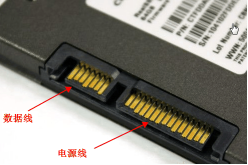
1. Features:
1. SATA interface is a serial ATA interface, its data transmission is serial, compared with the previous parallel ATA interface, SATA interface has a higher transmission rate. Transmission rates can reach 1.5Gbps (SATA 1.0), 3Gbps (SATA 2.0), and 6Gbps (SATA 3.0). For example, SATA 3.0 interface hard drives can theoretically transfer 750MB of data per second, which is enough to meet the data storage and read needs of most common servers.
2. The data cable and power cable of the SATA interface are relatively thin, which makes the wiring inside the chassis more concise, which is conducive to the air circulation inside the chassis, thereby improving the heat dissipation performance of the server.
3. It supports hot-swappable function, which means that the hard disk can be plugged and unplugged without causing damage to the server system and other hard disks under the condition that the server is running normally, which facilitates the replacement and maintenance of the hard disk.
2. Application Scenarios:
1. It is suitable for ordinary server storage scenarios that do not require extremely high read and write speed, such as file servers and small website servers for small enterprises, which are used to store some documents, pictures, web page files, etc. For example, a file server in a small office environment uses SATA interface hard drives to store employees' office documents, and its read and write speeds can meet the daily file sharing and access needs.
SAS Interface (Serial - Attached SCSI)
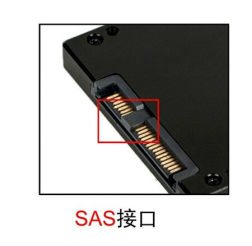
1. Features:
1. The SAS interface is a serial-connected SCSI interface, which inherits the high reliability and high performance characteristics of the SCSI interface. SAS interfaces can reach 3Gbps, 6Gbps, and 12Gbps transfer speeds, which are faster than SATA interfaces. The 12Gbps SAS interface, for example, can transfer 1.5GB of data per second and can quickly handle a large number of data reads and writes.
2. SAS interface has good compatibility, it can be compatible with SATA hard drives. This means that both SAS and SATA drives can be installed in the server's hard drive slots, giving users more flexibility in their drive choices.
3. SAS HDDs support a dual-port design, which allows HDDs to be connected to two different SAS controllers at the same time. In this way, if one controller fails, the other controller can still access the hard drive, which greatly improves the security of data and the reliability of the system.
4. Application Scenarios:
1. Widely used in medium and high-end servers, such as enterprise-level database servers, high-performance computing servers, etc. In the enterprise database server, the data in the database needs to be read and written frequently, and the SAS interface hard disk can quickly respond to these requests to ensure the efficient operation of the database system. At the same time, in some server environments with high data security requirements, the dual-port design of SAS-interfaced hard drives can effectively prevent data loss.
SCSI (Small Computer System Interface)
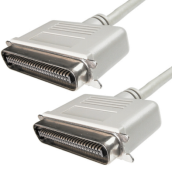
5. Features:
1. SCSI interface is a more traditional interface standard, which uses parallel data transmission. While its performance was excellent in the early days, its transfer speeds were comparatively slower as technology evolved. However, traditional SCSI interfaces can also reach a maximum transfer rate of 320Mbps, which can still be useful in some older devices that do not require speed.
2. SCSI interface hard disk has high reliability, it is designed to focus on data accuracy and integrity. In a multitasking environment, SCSI interface hard disks can handle data requests from multiple devices at the same time, and have good concurrent processing capabilities.
3. SCSI-interfaced hard drives are typically more expensive, mainly because of their monopoly in the early days of high-performance storage and their high manufacturing and R&D costs.
6. Application Scenarios:
1. Due to its excellent concurrency processing ability, it is widely used in early server environments, such as some file servers and network servers that need to process multiple user data requests at the same time. However, with the development of SAS and SATA interfaces, SCSI interfaces are less and less used in new server systems, and are now mainly used for upgrades to older equipment that require compatibility or specific industrial control areas.
NVMe (Non - Volatile Memory Express) interface
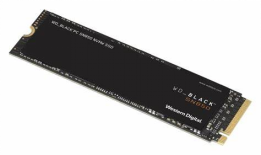
1. Features:
1. Ultra-high transfer speed: The NVMe interface storage device can achieve extremely high read and write speeds. Sequential read speeds can easily exceed 3000MB/s, and sequential write speeds can reach very high levels. This is mainly because it reduces the protocol overhead of traditional storage interfaces and is able to take full advantage of PCIe's high-speed lanes. For example, in some high-performance computing scenarios that require extremely high data read and write speeds, or in cache servers in large data centers, NVMe interfaces can quickly read and write data, improving the overall performance of the system.
2. Low latency: The NVMe protocol is designed so that the response time of the storage device is very short. Compared to traditional SATA interfaces, NVMe latency can be reduced to a few microseconds or even lower. This low latency feature is critical in applications that require fast responses, such as real-time data analysis systems, online game servers, and more.
3. Support multi-queue processing: NVMe supports multiple input/output queues, which can process multiple read and write requests at the same time, improving the processing capacity of storage devices in high-concurrency environments. This allows it to maintain efficient performance in scenarios where a large number of data requests are handled.
2. Application Scenarios:
1. It is mainly used in scenarios such as high-performance computing, cache servers in large data centers, and hot data storage in ultra-large-scale storage systems. In high-performance computing, such as gene sequencing in scientific research and weather simulation, which require rapid processing of large amounts of data, NVMe interface storage devices can quickly read and write data to accelerate the computing process. In the cache server of the data center, it can quickly provide frequently accessed data, improving the responsiveness of user access.
M.2 interface
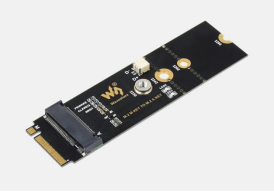
3. Features:
1. Miniaturized design: The M.2 port storage device is compact and can be installed directly on the motherboard, saving space inside the case. This is great for small servers, laptops, and other space-hungry devices. For example, in some ultra-small server chassis, M.2 SSDs can be easily installed without taking up too much space, allowing the chassis to be designed to be more compact.
2. High-speed performance (NVMe - M.2): When the M.2 interface adopts the NVMe protocol, it can provide high-speed read and write performance, which is a great improvement compared to the traditional M.2 devices with SATA interface. Sequential read speeds can reach over 3000MB/s, and sequential write speeds are also quite impressive. This high-speed performance makes it excellent in scenarios where read and write speeds are required.
3. Multiple length specifications: The M.2 interface is available in various length specifications, such as 2230, 2242, 2260, 2280, etc., and these numbers represent the length of the device in millimeters. Different lengths can meet different equipment installation needs and capacity needs. For example, 2280-spec M.2 SSDs typically have a larger capacity and are suitable for use in scenarios that require high storage capacity.
4. Application Scenarios:
1. Widely used in small servers, high-performance laptops, ultrabooks and other equipment. In small servers, an M.2 SSD can be used as a system disk to quickly boot the system and load applications. In high-performance laptops, it can provide a fast storage solution to meet users' requirements for data read and write speeds, such as quickly opening large files, loading games, etc.


